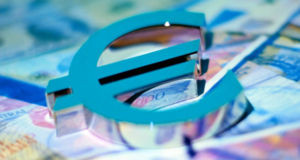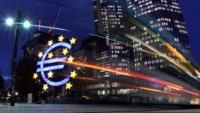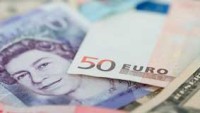 The European Central Bank (ECB) delivers its first monetary policy verdict after the UK’s decision to leave the European Union. At his press conference, the ECB’s President Mario Draghi is expected to comment on Brexit, on low-to-negative sovereign rates in the Eurozone as a result of an out-of-control appetite post-Brexit and the crisis in the Italian banking sector.
The European Central Bank (ECB) delivers its first monetary policy verdict after the UK’s decision to leave the European Union. At his press conference, the ECB’s President Mario Draghi is expected to comment on Brexit, on low-to-negative sovereign rates in the Eurozone as a result of an out-of-control appetite post-Brexit and the crisis in the Italian banking sector.
The ECB is expected to maintain the status quo at today’s meeting. September’s meeting could signal more monetary stimulus, according to consensus. Not the size but rather duration of the ECB’s Quantitative Easing (QE) programme, as well as the composition of its portfolio are expected to be the major talking points. The ECB will certainly need to shift towards a broader ETF, corporate bond purchases, given that the liquidity in eligible bonds in the Eurozone sovereign complex is dangerously drying up. As of today, $3.2 trillion worth of Eurozone bonds are yielding below zero; 60% of eligible German bond yields are below the ECB’s deposit rate of -0.40%, which is also defined as the lower limit for the ECB purchases. Digging a bit deeper, the abnormally low sovereign rates could, according to many, push the ECB towards the limits of its bond buying programme sooner rather than later.
Although the ECB said it has the flexibility to keep the QE programme up-and-running until the March 2017 deadline, there are rising concerns that it may not be able to do so, unless it changes either the eligibility rules, or the composition of its portfolio.
Could the ECB easily get away by changing the capital key ratio? Not so sure, given that such modification will result in a riskier ECB portfolio, and could bring the political dimension of the single monetary policy on the table.
And even if it did so, the new setting would buy no more than a couple of months, if not weeks, before the end of the road. Goldman Sachs analysts estimate that changing the capital key ratio could buy no more than two extra months in German bond purchases, while changing issue limits or getting rid of rate constraints could buy four to ten months respectively.
On the other hand, the market gives more than a 50% chance for an ECB rate cut by December. Ceteris paribus, lower deposit rates will, of course, interfere with the sustainability of the QE programme – as it would further squeeze the universe of bonds good to purchase.
In summary, the ECB is now in a complex policy labyrinth and needs fresh air to keep running in a more-than-ever challenging monetary environment as the Bank of Japan, Reserve Bank of Australia and Reserve Bank of New Zealand are also preparing for more stimuli and hopes for a Federal Reserve (Fed) rate hike by the end of this year have faded to zero. In contrary, the market assesse a 54% chance for a Fed rate hike by March 2017.
The euro rebounded off 1.098 against the US dollar yesterday. Even if the ECB-doves remain in charge, we could not rule out the potential for further recovery in the euro complex. It depends on whether or not Mario Draghi could meet high market expectations. We stand ready for two-sided volatility. The EURUSD is trending higher as a potential disappointment from the ECB and the convergence between the Fed and the ECB policy outlook are being actively priced in. From a technical perspective, the key technical resistance is eyed at 1.1051, major 38.2% retrace on July 14 – 20 drop, above which the EURUSD could step in the bullish consolidation zone.













